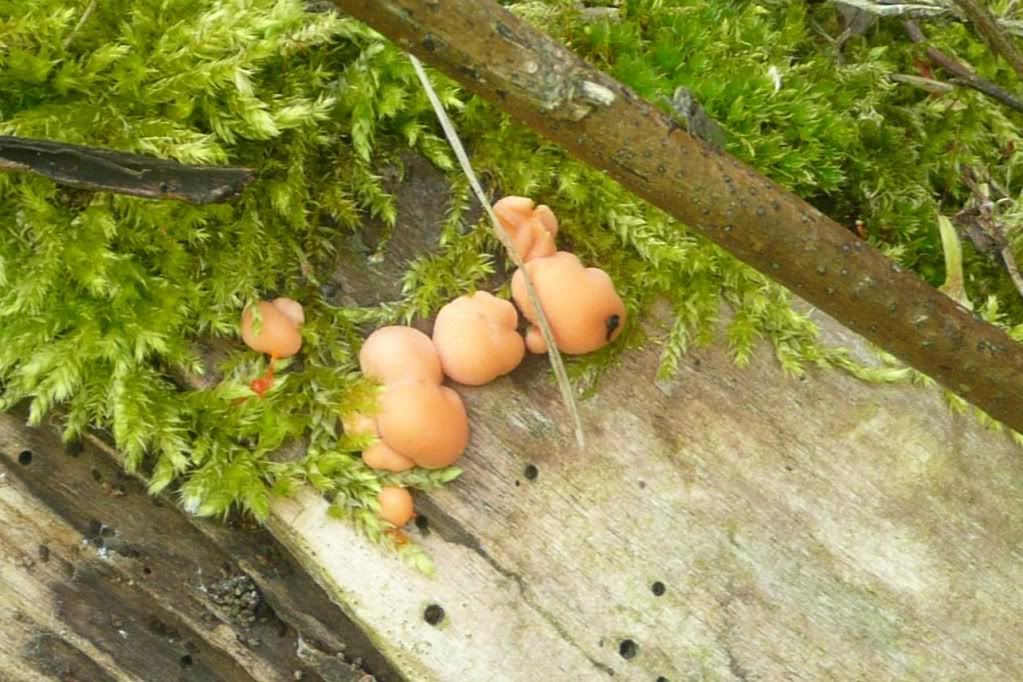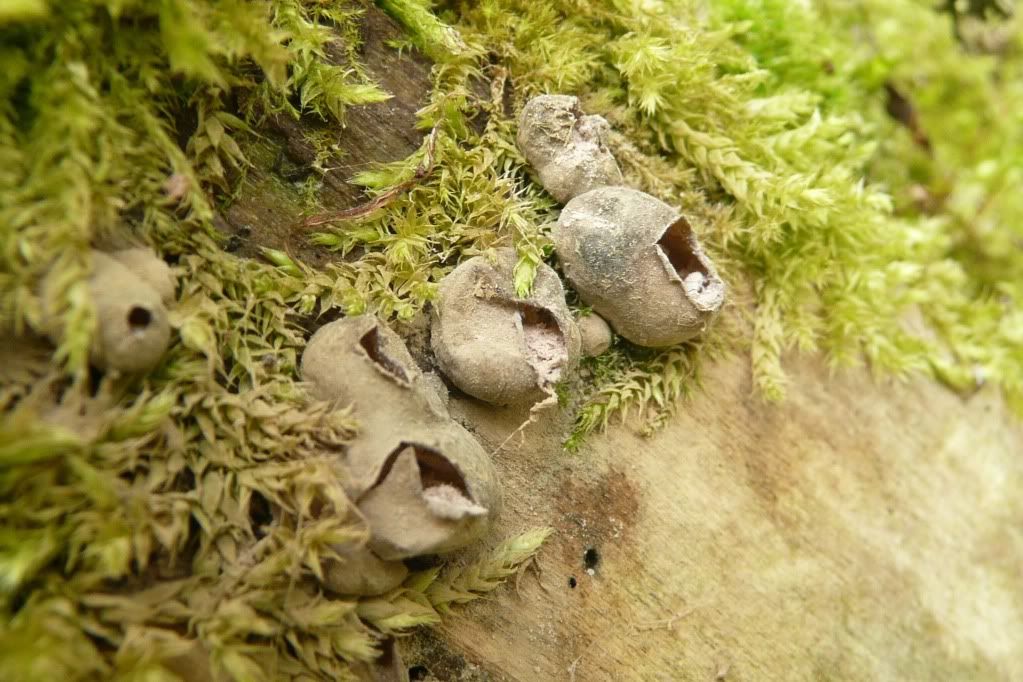Although not as dazzling as a kingfisher, as elegant as an orchid or impressive as an otter, slime moulds are possibly the most fascinating organism to feature in this blog.
Classification depends upon preferred text book, favourite biologist or wikipedia page of choice. Having previously been classified as fungus, recent DNA analysis has placed in a different taxonomic kingdom - protozoa.
In the initial phase, slime moulds are single celled microscopic organisms, consuming bacteria and fungus as they move very slowly over dead wood. When they encounter other similar cells they fuse together to form the plasmodium stage, which is still able to move at a speed of 1mm per hour and what looks like the plasmodium stage of a Lycogala terrestre (common name is apparently Wolf's Milk) on a willow tree along the Thames path:
.
.
The plasmodium stage only lasts a few hours, when it runs out of food it releases it's spores:
.
References:
Collins complete guide to Birtish mushrooms and toadstools
University of California Museum of Paleontology: http://www.ucmp.berkeley.edu/protista/slimemolds.html
Universe Review: http://universe-review.ca/R10-18-slimemoulds.htm


Amazing...but bizarre...
ReplyDeleteReally interesting and unique topic, as always!
ReplyDelete